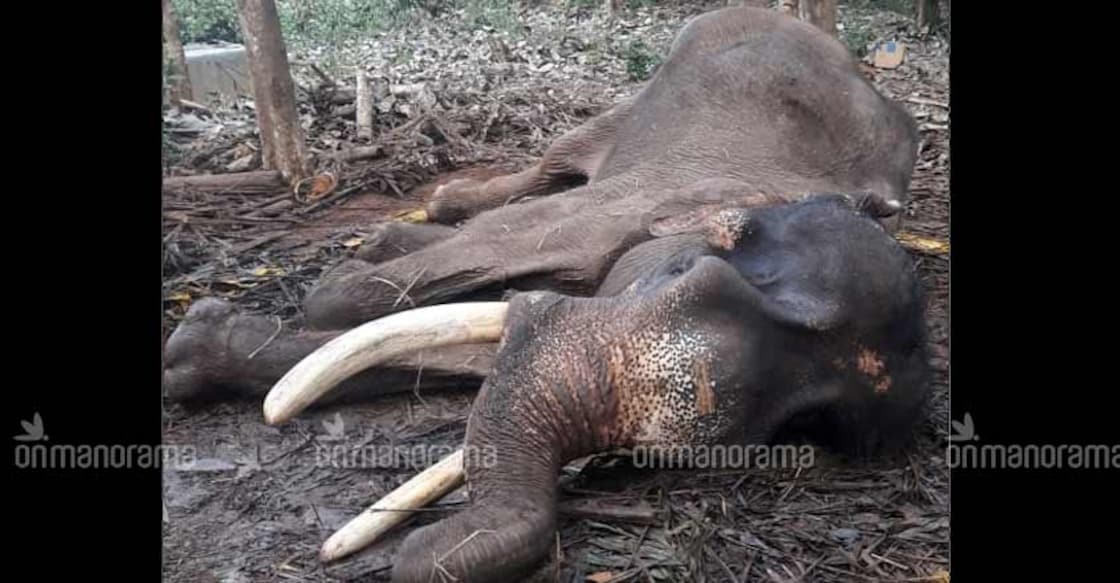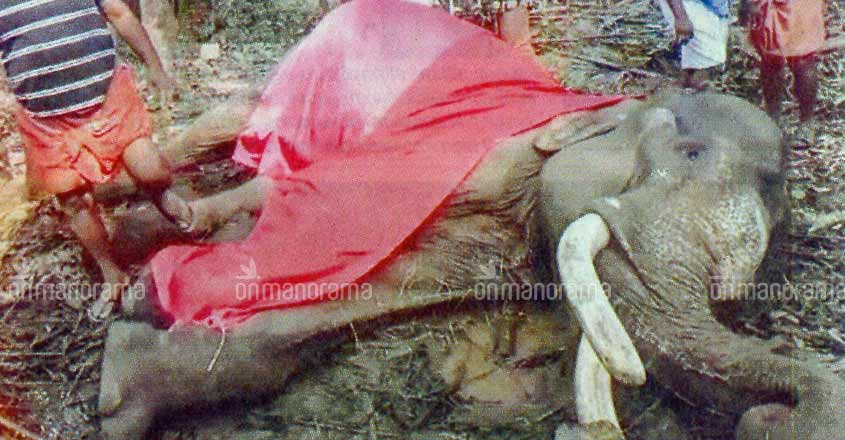2018 is the worst year in history for captive elephants in Kerala

Mail This Article
Captive elephants in the state are falling dead like never before. Most of the dead look shockingly skinny; their tummies squeezed in and their bones pushing out like dead cattle found in barren deserts.
With the death of 41-year-old Munnar Ganesh on December 14, the total number of captive elephant deaths in 2018 has touched 33, the highest ever. It was only in 2011 and 2015 that the number of deaths came close, 32 each. In all other years, it was less than 24. Already, the total number of captive elephants in the state have shrunk to 521, from 667 in 2012.
Elephantine greed
Ganesh's untimely demise is also the story of human greed. His good looks was his curse. With a long perfectly curved tusk and a trunk that fell right down to the ground, attributes elephant lovers consider divine, Ganesh was a huge draw at festivals. The beast was dragged from one procession to the other without let, and when there were no festivals to parade it, the tusker was made to do heavy work like pulling logs. He was never given enough water, food or rest.
For Ganesh's custodians, profit maximisation was the sole objective. In 2016, during a temple festival, it was left to the public to complain about the wounds on the beast's body. The police were forced to arrest the veterinarian who gave Ganesh a fake fitness certificate. Another veterinarian, too, testified against his colleague. But here was the irony. It soon came to light that the veterinarian, who spoke against the doctor who gave the fake fitness certificate, had earlier given another fake fitness certificate that allowed Ganesh's owners to parade it in another festival!

“When the going got tough for Ganesh's owners here, they transported him illegally to Coimbatore. It was only in May that the elephant was brought back to Thrissur,” said K Venkitachalam, the general secretary of Heritage Animal Task Force (HATF).
Doctor Donothing
It is unrealistic to expect that all veterinary doctors should be like Doctor John Dolittle, British author Hugh Lofting's hugely popular vet who is so sensitive to the pain of animals that he can converse with them. But the least they can do is to demonstrate that they have a heart. They shouldn't be Doctor Donothing. A conscientious vet could have easily prevented Ganesh's misfortune.
“The role of the veterinary doctor is crucial. It is on the basis of his fitness certificate alone that the Forest and Revenue Departments grant permissions for the use of elephants in festivals or for other hard labour like pulling logs inside forest areas,” said Dr Jayakumar, the Forest Department's veterinarian. According to him, the veterinarian should check the obedience of the elephant with the mahout before granting the fitness certificate.
Starving jumbos
It was not just Ganesh who died without having food for days and months. Cheliparambil Vinayakan (48), Cherussery Madom Devidasan, Thiruvambady Sivasundar (48), Vineeth Krishnan (25), Kandathil Sudheer (42), Mangalamkunnu Guruvayoorappan (38) Thirumal Gajendran (45), Neyyatinkara Kannan (22), and Lakshmi (50) are some of the elephants that starved to death this year. Their stories are almost similar; work without break, inadequate food, sudden illness, chained and left to die.
Shivsundar's was the most mourned death in the state this year. Thousands paid homage to the tusker that belonged to the Thiruvambady temple in Thrissur, and was hailed as 'Azhakinte Thampuram' (The Lord of Good Looks). Shivsundar remained in a state of coma for over two months before it breathed its last.
Post-mortem revealed massive constipated blocks, some as large as ration shop flour sacks, within the elephant's body.
According to HATF's Venkitachalam, who had compiled the captive elephant death toll, elephant owners abandon the elephants after they have no more use of them. “The owner will have to spend at least Rs 3,000 a day to feed an elephant. So it is convenient for them to let the animal die,” Venkitachalam said. Dr Jayakumar has a solution. "Transfer all captive elephants over the age of 50 to the Forest Department," he said.
The Department's vet said he had seen some of the dead jumbos like Ganesh and Neyyatinkara Kannan before their deaths. “They were so starved that I knew they would not survive. Their internal systems had virtually shut down,” he said. Dr Jayakumar had also seen the treatment records, and was appalled. “I found that for the past one month or so, the medicines were repeated,” he said. “You repeat medicines only when things improve, not when the health deteriorates,” he added.
Bad dietary habits
Post-mortem conducted on most of the dead elephants revealed that they had impaction, a severe form of constipation in which undigested food blocked the intestinal passage. Venkitachalam said that rather than keeping them chained for the whole day, captive elephants should at least be allowed to walk freely for long hours in a sprawling fenced-in area. “You make them work so hard for your gains that the least that can be done is create such spaces for them. Walking is one way they can beat indigestion,” Venkitachalam said.
It is Venkitachalam's figures on captive elephants that even the Forest Department relies on. According to him, 240 captive elephants have died in the state in the last nine years. Now, only 384 captive elephants are left in the state.


